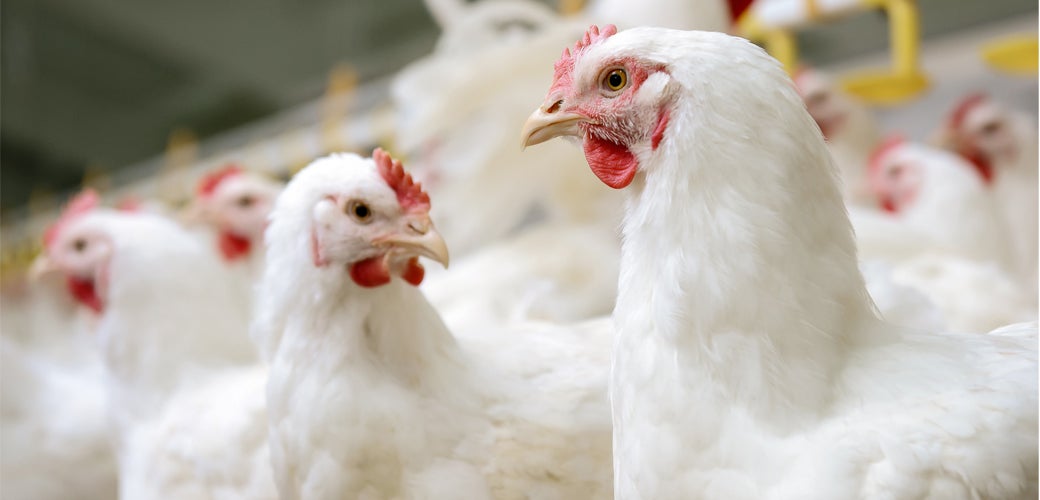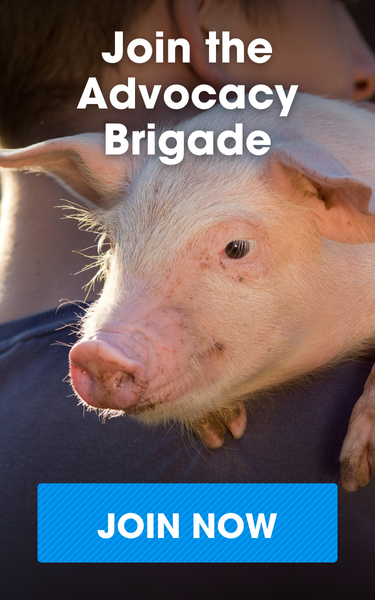
The Battle to Ensure Protections for USDA Organic Animals

- In 2017, after years of advocacy by the ASPCA and other stakeholders, the USDA issued organic program requirements for more humane animal housing, transportation and slaughter.
- In 2018, the agency suddenly did an about-face and withdrew these important animal protections, allowing companies using factory farm conditions to continue to qualify as organic and use the “USDA Organic” label on their packages.
- With the withdrawal now being challenged in court, the USDA is attempting to justify its decision in part by minimizing consumers’ willingness to pay for higher-welfare products.
- The ASPCA submitted comments reminding the USDA of an abundance of data showing that consumers are willing to pay more for higher-welfare products—including the higher-welfare conditions that they mistakenly believe the “USDA Organic” label represents.
Many conscientious consumers are purchasing—and paying more for—organic animal products under the mistaken belief that this label ensures animals have pasture access and other welfare-related benefits. Yet given the U.S. Department of Agriculture’s (USDA) troubling lack of meaningful animal welfare regulations and enforcement, this may not be the case. Last week, the ASPCA submitted comments once again denouncing the USDA’s 2018 withdrawal of critical protections for animals producing organic milk, meat and eggs.
Prior to 2017, the USDA’s vague animal welfare rules had allowed companies using factory farm conditions to qualify as organic and use the coveted “USDA Organic” label on their packages, despite the fact that their practices did not match the expectations of consumers. But in 2017, the USDA finalized an important set of welfare regulations for animals raised on USDA Organic-certified farms that created much more detailed and rigorous requirements for animal housing, transportation and slaughter.These new protections—termed the Organic Livestock and Poultry Practices (OLPP) rule—were years in the making, and had been advocated for by the ASPCA, organic producers and many other stakeholders.
However, shortly after finalizing its new, more stringent rules, the USDA did an about-face and withdrew them. This left millions of animals without meaningful protections against industrialized conditions like crowding, barren environments, lack of fresh air and sunlight, and painful mutilations. This is a troubling situation that threatens the millions of animals raised each year on organic farms and disadvantages the majority of organic farmers who raise their animals in higher-welfare conditions. The ASPCA challenged this withdrawal at the time, and since then has been advocating for the OLPP rule to be reinstated.
The USDA’s withdrawal of the OLPP rule is now being challenged in two separate lawsuits. Through those suits, the agency has been granted permission to revisit its economic justifications for withdrawing the rule. As a result, it published and requested public input on updated economic findings and calculations. The ASPCA submitted comments challenging the USDA’s low estimates of consumers’ willingness to pay for higher-welfare products—reminding the USDA of our and others’ data showing that consumers are demanding assurances of better animal welfare. In fact, across the board, consumers are increasingly buying products based on animal welfare claims and are willing to pay more for more humanely produced goods.
We will continue to closely monitor the status of the USDA’s OLPP rule and work towards its ultimate implementation. To stay informed and learn how you can help, please join the Advocacy Brigade. You can also visit this page breaking down what the USDA Organic label means for farm animal welfare, and check out our label guide to find out which labels and claims truly indicate better conditions for farm animals.

